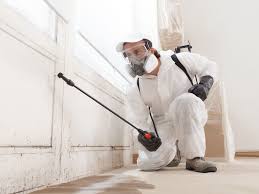Introduction: Understanding Mold and Its Dangers
Mold is more than just an unsightly nuisance — it’s a serious problem that can affect your health and damage your home. Mold spores thrive in moist, warm environments and can spread rapidly if left untreated. Whether you’re a homeowner, property manager, or business owner, mold remediation is essential for maintaining a safe, healthy indoor environment.
What Is Mold Remediation?
Mold remediation is the process of identifying, removing, cleaning, and preventing mold growth in buildings. Unlike simple mold removal, remediation includes comprehensive measures to ensure mold does not return.
Why Is Mold Dangerous?
- Health Risks: Mold can cause respiratory issues, allergies, skin irritation, and even neurological problems in sensitive individuals.
- Structural Damage: Over time, mold can weaken wood, drywall, and other materials, compromising the structural integrity of your home.
- Property Value: A mold-infested home can dramatically drop in market value.
Common Causes of Mold Growth
- Leaky roofs or pipes
- Flooding or water damage
- Poor ventilation
- High humidity levels
- Damp basements and crawl spaces
Signs You Have a Mold Problem
- Musty odors
- Visible mold patches
- Discolored walls or ceilings
- Warping or soft spots in wood and drywall
- Chronic allergies or respiratory issues indoors
DIY Mold Removal vs. Professional Mold Remediation
| DIY Mold Removal | Professional Mold Remediation |
|---|---|
| Suitable for small areas (under 10 sq. ft.) | Best for large or toxic mold infestations |
| Uses household cleaning agents | Uses commercial-grade equipment and EPA-approved solutions |
| Doesn’t always address root cause | Identifies and eliminates moisture sources |
| Risk of exposure | Safe, efficient, and certified process |
Step-by-Step Professional Mold Remediation Process
1. Inspection and Assessment
Experts inspect the property using moisture meters, infrared cameras, and lab testing to identify mold type and contamination levels.
2. Containment
Technicians isolate the affected area with plastic sheeting and negative air pressure to prevent mold spores from spreading.
3. Air Filtration
HEPA air scrubbers and filters are used to remove mold spores from the air.
4. Mold Removal
All mold-infested materials (drywall, insulation, carpet) are removed or cleaned using antifungal and antimicrobial treatments.
5. Cleaning and Sanitization
Personal items and furniture are cleaned, deodorized, and sanitized.
6. Restoration
Rebuilding or replacing removed structures like walls, ceilings, or flooring.
What to Expect During Mold Remediation
- Temporary relocation may be needed
- 1–5 days for complete remediation, depending on the severity
- Final clearance testing to ensure mold is gone
How to Prevent Mold from Returning
- Fix leaks immediately
- Use dehumidifiers and air purifiers
- Ensure proper ventilation in bathrooms, kitchens, and attics
- Clean and dry wet areas within 24–48 hours
- Use mold-resistant building materials
Cost of Mold Remediation
- National Average: $500 to $6,000+
- Minor Areas: $500–$1,500
- Severe Infestation: $5,000–$10,000+
Cost depends on location, size of the moldy area, and extent of damage.
When to Call a Professional
- If mold covers an area larger than 10 square feet
- If you suspect black mold (Stachybotrys chartarum)
- If family members are experiencing health issues
- If the mold returns after cleaning
Choosing the Right Mold Remediation Company
Look for:
- IICRC certification (Institute of Inspection, Cleaning and Restoration Certification)
- Licensed, bonded, and insured professionals
- Positive customer reviews
- Free estimates and clear pricing
- Post-remediation verification testing
FAQs About Mold Removal
Q: Is black mold more dangerous than other types?
A: Yes, black mold can produce mycotoxins that are harmful to humans and pets.
Q: Can mold grow back after removal?
A: Yes, if the moisture source isn’t eliminated, mold can return.
Q: Will insurance cover mold remediation?
A: Some homeowner’s policies cover mold caused by sudden and accidental incidents (e.g., burst pipes), but not due to neglect.
Q: Can I stay in my home during mold remediation?
A: Sometimes, yes — but in severe cases, temporary relocation may be advised.
Conclusion
Mold can wreak havoc on your health and property if not addressed promptly. Whether you’re dealing with a small outbreak or a severe infestation, mold remediation is essential. Trust certified professionals to assess, remove, and prevent future mold problems so you can breathe easy in a clean, healthy home.






